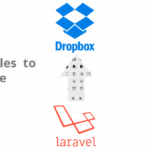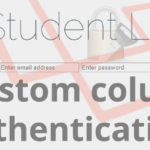The default Laravel Application is intended to provide a great starting point for both large and small applications, and also for ecommerce development, for ecommerce development company and has become the go-to framework for people all over the world. It has robust technical capabilities, and is a leader on the top of PHP MVC frameworks. It has a great syntax that makes it object-oriented, and with a few artisan commands, an application will be equipped with secure authentication and authorization.
Its goals of simplicity, clarity and getting work done ensure value for the end-user. some popular open source projects that use Laravel include personal music streaming servers and rapid API generator tools.
Improved Scheduling
Laravel 5.5 continues the improvements made to the past model of the Laravel 5.4 by adding package auto-detection, API resources/transformations, auto-registration of console commands, queued job chaining, queued job rate limiting, time based job attempts, renderable mailables, renderable and reportable exceptions, more consistent exception handling, database testing improvements, simpler custom validation rules, React front-end presets, route::view and route::redirecctmethods, “locks” for the Memcached and Redis cache drivers, on-demand notifications, headless Chrome support in Dusk, convenient Blade shortcuts, improved trusted proxy support, and more.
The possibility of limiting the re-attempt of running a certain job until a certain hour. This is extremely useful for jobs that are directly bound to the execution in a certain schedule interval, so that the developer won’t need to case the interval checks.
A new development from Laravel is the introduction of optional global functions which simplify or sometimes completely eliminates the validation of class instances before executing models. Other improvements were brought to the Queueing system: hooking-up the jobs in “series” – if one of the jobs doesn’t execute correctly, the others won’t be able to execute themselves. Job chaining allows you to specify a list of queued jobs that should be run in sequence. If one job in the sequence fails, the rest of the jobs will not be run. If your application interacts with Redis, you may now throttle your queued jobs by time or concurrency. This feature can be of assistance when your queued jobs are interacting with APIs that are also rate limited. Job Rate Limiting was introduced for instances where the queue worker has a limit of requests, so the configuration of the number of attempts on time intervals is successfully done. It is especially useful in the interaction with services that also limits the number of requests on a certain interval.
Package Discovery
Laravel can automatically detect and register service providers and facades on your behalf, as against before where you installed the package and then required several additional steps such as adding the service provider to your application configuration file and registering any relevant facades.
All of your worker configuration is stored in a single, simple configuration file, allowing your configuration to stay in source control where your entire team can collaborate.
Improved User Experience
Laravel Horizon provides a beautiful dashboard and code-driven configuration for your Laravel powered Redis queues. Horizon allows you to easily monitor key metrics of your queue system such as job throughput, runtime, and job failures.
API Resources
When building an API, you may need a transformation layer that sits between your Eloquent models and the JSON responses that are actually returned to your application’s users. Laravel’s resource classes allow you to expressively and easily transform your models and model collections into JSON.
Validation rule objects provide a new, compact way of adding custom validation rules to your application. In previous versions of Laravel, the validator::extend method was used to add custom validation rules via Closures. However, this can grow cumbersome. The Laravel 5.5 offers a new make::rule command that will generate a new validation rule in the Rules directory.
Other Improvements
Laravel application include on-demand notifications, renderable mailable and exceptions, request validation, consistent exception handling, cache locks, blade improvements, new routing methods and sticky database connections. In conclusion, Laravel is continuously improving and innovating for websites and web apps. This programming language will see a lot of developments with quicker code execution and usage of memory optimization this year. Laravel offers great, free and paid tutorials called Laracasts to keep developers learning more through the use of free and paid tutorials.








